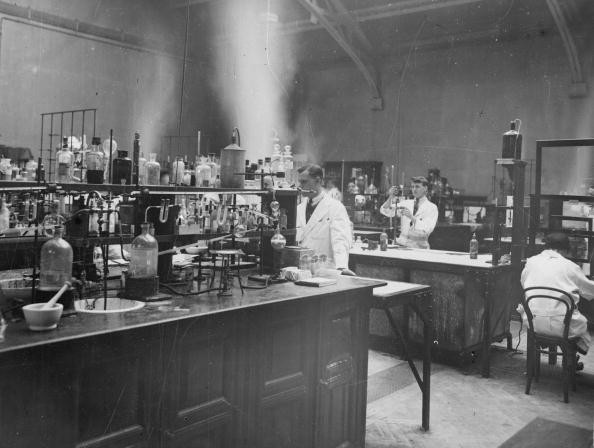The United States Senate has passed a new bill that will promote and support sustainable chemistry and its applied technology for the benefit of the economy, the environment, and human health.
Tagged the Sustainable Chemistry Research and Development Act (S.999), the now-bipartisan-supported bill (S.4049) aims to allot military spending for the fiscal year 2021, starting October 1 this year. Within the bill, provisions direct federal agencies to include sustainable chemistry research and application in their work, coordinated by the White House Office of Science and Technology Policy (OSTP).
Individual agencies are tasked to assess the status quo of sustainable chemistry in their own sphere before devising and evaluating proposals in the promotion of related technologies.

c.1930: Researchers working in a chemistry laboratory.
Sustainable Chemistry Research and Development Act
In December 2019, the House of Representatives passed the stand-alone legislation for sustainable chemistry, H.R. 2051, which received bipartisan support. A day after, the U.S. Senate has already received and read the resolution twice.
According to the National Law Review article from last January 2020, the Sustainable Chemistry Research and Development Act revolves around five key findings regarding sustainable chemistry. The first refers to sustainable chemistry's role in the federal government, pointing out Section 114 of the American Innovation and Competitiveness Act of 2019.
The second revolves around its "contribution to business competitiveness across various industrial and consumer sectors." The third focuses on sustainable chemistry's ability towards cost reduction and opening new opportunities in the market through manufacturing and material innovations.
The fourth one gears toward the improvement of efficiency in meeting human needs while minimizing environmental harm--reduction of hazardous chemicals emission, resource use efficiency--and benefiting the economy.
RELATED: Photos Collected Revealed EPA Significance in America
Lastly, the makers of the policy pointed out "the important role of the federal government in supporting full innovation and market potential sustainable chemistry technologies through a coordinated national effort supporting research, development, demonstration, and commercialization."
Roadmaps Following Implementation
Now that the legislation has been passed, the public can expect an interagency working group to come together and discuss how federal programs and activities will be mapped along the way.
In the bill, the group is to be co-chaired by the OSTP, including representatives from the following agencies: the Department of Defense (DOD), the Department of Energy (DOE), the National Institute of Health (NIH), Food and Drug Administration (FDA), National Institute of Standards and Technology (NIST), the U.S. Environmental Protection Agency (EPA) and Department of Agriculture (USDA), and other related federal agencies as needed.
RELATED: Scientists are Looking Into the Science of EPA's Clean Air Standards
The interagency working group is also expected to consult stakeholders relevant to the bill-related undertakings to provide an updated and comprehensive definition for sustainable chemistry. Specifically, in advancing the sustainable chemistry framework, the group shall take four factors into consideration.
First is taking input from relevant stakeholders: business and industry representatives, members of the scientific and defense communities, local governments including states and tribal communities, as well as non-governmental organizations, or NGOs.
The interagency group must also take into consideration existing definitions or frameworks relating to sustainable chemistry, especially those in use in federal agencies. Aside from the definitions and frameworks used by these agencies, the group should also consider those used by international organizations where the United States is a member as well as any other existing definitions for the concept.














